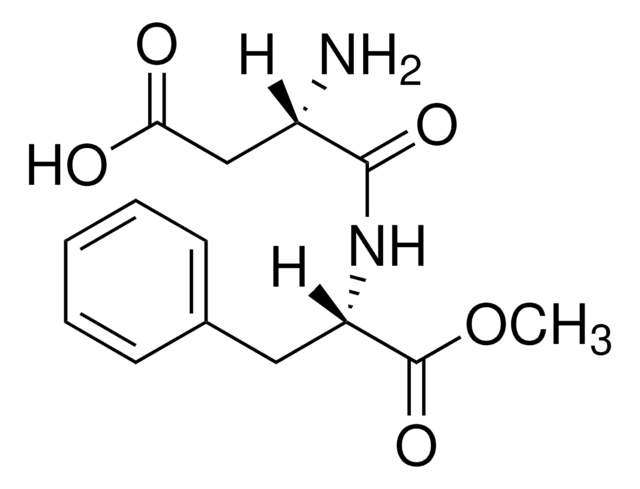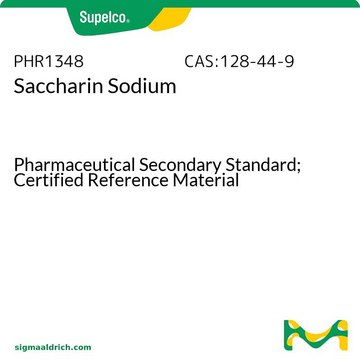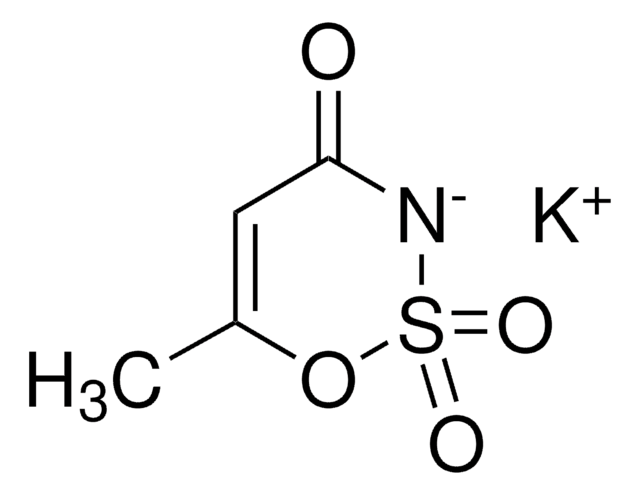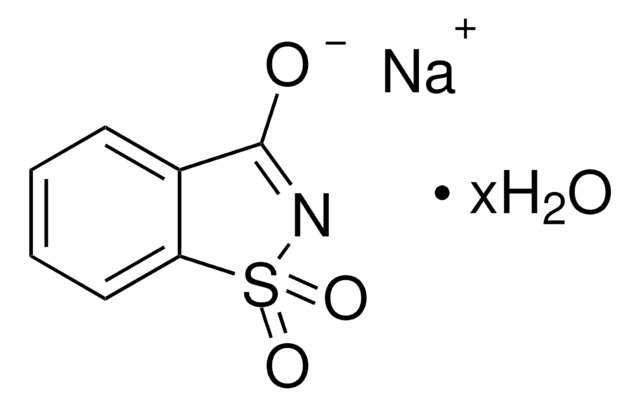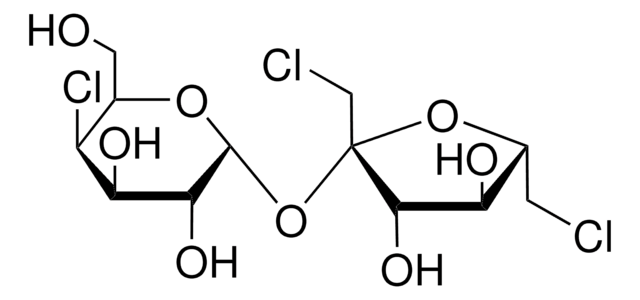PHR1341
Saccharin
Pharmaceutical Secondary Standard; Certified Reference Material
Sinónimos:
Saccharin, 2,3-Dihydroxy-1,2-benzisothiazol-3-one-1,1-dioxide, 2-Sulfobenzoic acid imide, o-Benzoic sulfimide
About This Item
Productos recomendados
grade
certified reference material
pharmaceutical secondary standard
Quality Level
agency
traceable to Ph. Eur. S0040000
traceable to USP 1607007
API family
saccharin
CofA
current certificate can be downloaded
technique(s)
HPLC: suitable
gas chromatography (GC): suitable
mp
226-229 °C (lit.)
application(s)
pharmaceutical (small molecule)
format
neat
storage temp.
2-30°C
SMILES string
O=C1NS(=O)(=O)c2ccccc12
InChI
1S/C7H5NO3S/c9-7-5-3-1-2-4-6(5)12(10,11)8-7/h1-4H,(H,8,9)
InChI key
CVHZOJJKTDOEJC-UHFFFAOYSA-N
¿Está buscando productos similares? Visita Guía de comparación de productos
General description
Certified pharmaceutical secondary standards for application in quality control provide pharma laboratories and manufacturers with a convenient and cost-effective alternative to in-house working standards.
Application
Biochem/physiol Actions
Analysis Note
Other Notes
Footnote
Recommended products
Related product
Storage Class
11 - Combustible Solids
wgk_germany
WGK 2
flash_point_f
Not applicable
flash_point_c
Not applicable
Elija entre una de las versiones más recientes:
Certificados de análisis (COA)
¿No ve la versión correcta?
Si necesita una versión concreta, puede buscar un certificado específico por el número de lote.
¿Ya tiene este producto?
Encuentre la documentación para los productos que ha comprado recientemente en la Biblioteca de documentos.
Los clientes también vieron
Nuestro equipo de científicos tiene experiencia en todas las áreas de investigación: Ciencias de la vida, Ciencia de los materiales, Síntesis química, Cromatografía, Analítica y muchas otras.
Póngase en contacto con el Servicio técnico